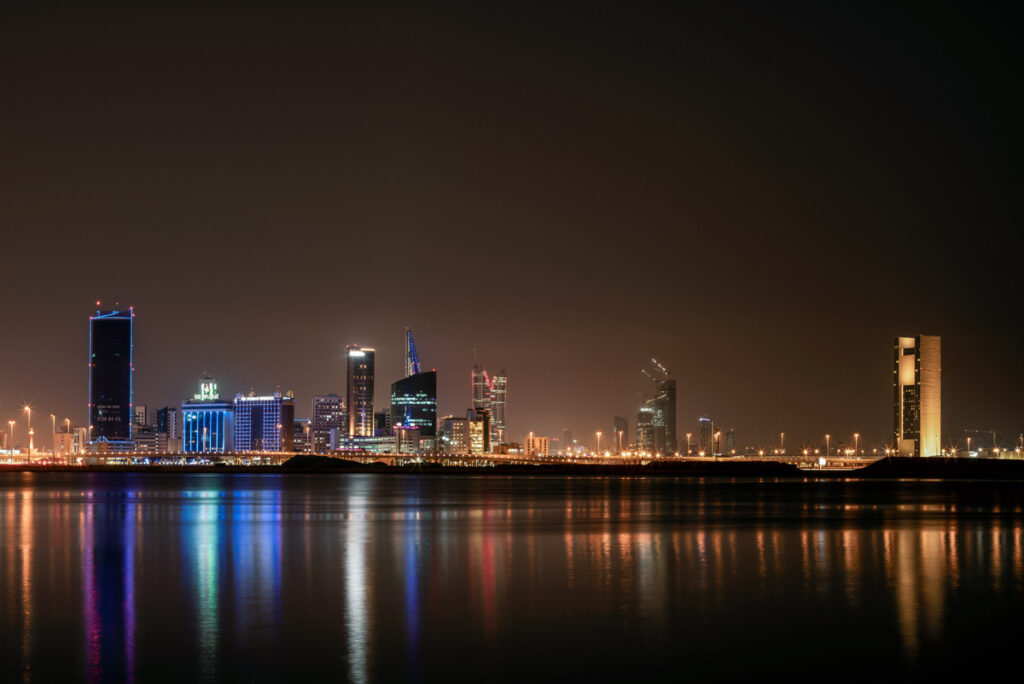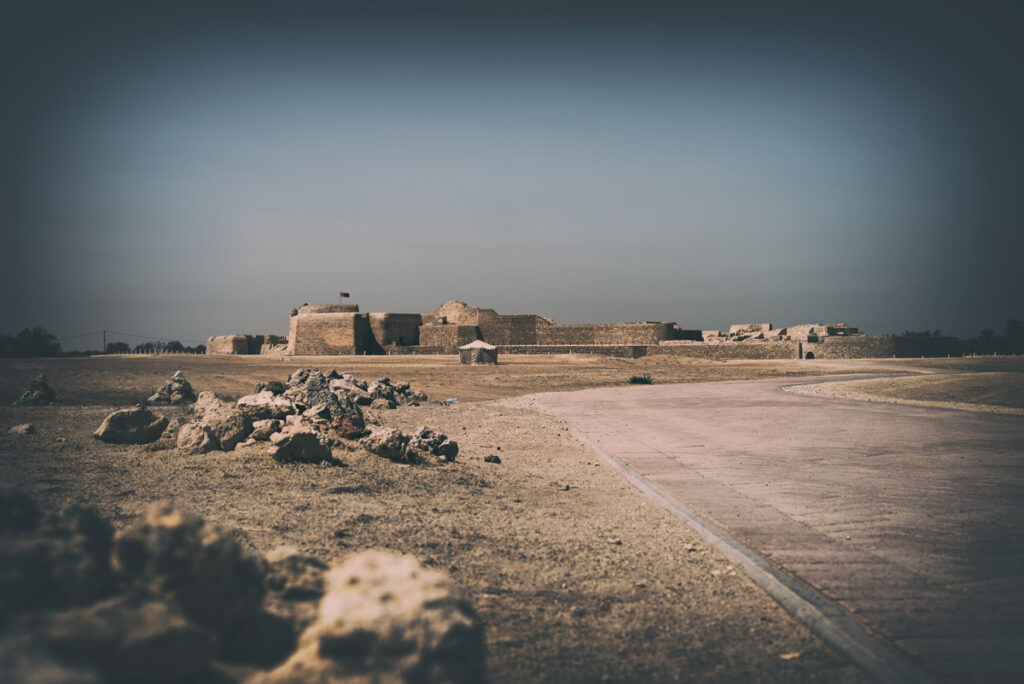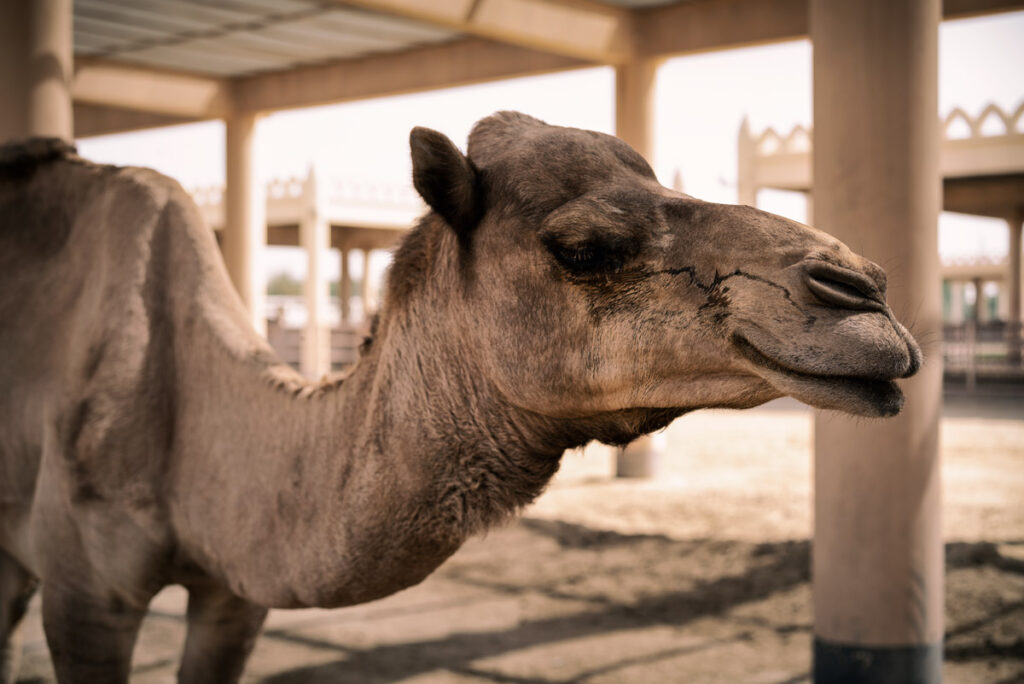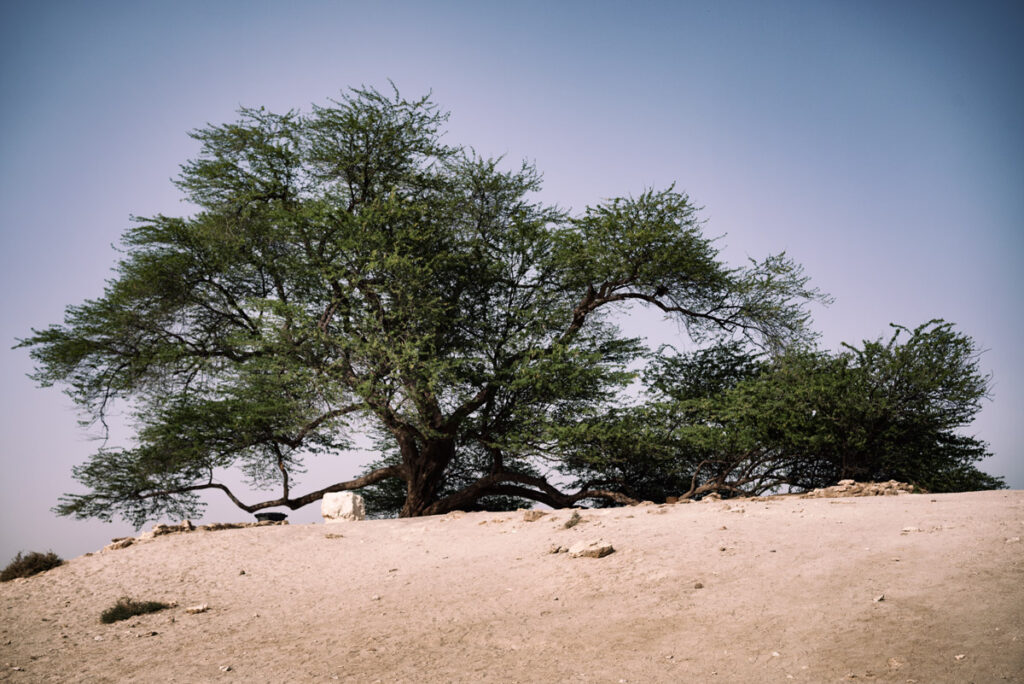Bahrain
Anyone flying with Gulf Air will inevitably have a stopover in Bahrain. The small petrostate is perfect for a short exploration tour – be it just a few hours or two to three days. We took our flight to Bangkok as an opportunity to leave the airport and stay in downtown Manama for two nights. We had rented a car and wanted to see more than just the capital. It was March and although we had left frosty temperatures behind us in Germany, the warmth was more than pleasant. The palm trees and sand, the sea and the blue sky were a relief after the long, dark winter in our home country.

On the first evening after we have landed, we eat in an Afghan restaurant. Bearded men look at us from under bushy eyebrows. A short walk through the city center shows that the work here is done by immigrants from abroad: Afghans, Indians, Syrians. The city center is an ugly network of narrow back alleys that branch out like a labyrinth. Burger stores, fast food, cheap Chinese goods, smelly cars and traffic jams. This is supposed to be one of the richest countries in the world?
The next morning, we drive to the old port town of al-Muharraq. We stroll past simple houses, through shady alleyways and across deserted squares. A group of children comes up to us, throws us a ball, laughs and wants to be photographed. An old woman sticks her head out of a doorway and shoos the children away. We return to our car and notice a parking ticket on the windshield. A moment ago we were parked in a narrow space, now our little car is the only one for miles around. A passer-by translates the ticket in Arabic. We are told to come to the police station to listen to a lecture. So we drive a few blocks to the nearest police station. Chris is wearing shorts and the doorman won’t let him in, so Vany is led into the station by a somewhat overwhelmed policeman. The policemen are surprised to see a woman, and a foreigner at that. They hardly speak any English, but instead a few selfies are taken and Vany is allowed to leave the station without any instructions. She would only be fined if she parked illegally again. Very accommodating.
We spend the rest of the afternoon strolling along the shore. There are luxury hotels and resorts here. Construction is going on everywhere and if there is not enough land, it will simply be extended. A gentle twilight eventually settles over the desert state. We have found a place to rest on a harbor wall. Old fishing boats float in the water. A red and gold shroud covers Manama.





The next morning, we first drive along the north coast. An empty, multi-lane highway. All around us: sand and houses. Bahrain doesn’t look like one of the richest countries. There is none of the pomp and ostentation that we know from Dubai. Or: the wealth is better hidden here.
The fort of Bahrain contains a museum. There are plaques everywhere informing visitors about the ongoing excavations and what has been found here. There are only a small handful of other tourists here besides us. The country’s flag hangs lifelessly in the windless air. From the walls of the fort, we can see the skyline of Manama. Sand and ocher colors. Brown tones, a warming sun above us. In a few weeks, it will burn down mercilessly hot.


We continue to our next stop – the royal camel farm in the west of Bahrain. Camels are the sports equipment of the desert dwellers. They are bred for racing and the fastest ones can be really expensive. But camels can also produce milk that tastes similar to cow’s milk. It is a widely consumed food in the Arab world.
On the farm, the camels are kept in open stables or staked-out enclosures. One herd is being fed – the long camel necks greedily hook together and form a hydra-like structure. We stroll curiously between the animals and keepers, nobody pays us any attention. By now, the midday sun is beating down on us.



Further south. The surrounding houses disappear, the road becomes yawningly empty. A four-lane city highway becomes a narrow, lonely asphalt road with sand drifts. Sand and sparse bushes as far as we can see. At some point, this wasteland is interrupted. The first tent settlements appear on the horizon. After a short time, we are surrounded by shacks, fences and tents. In between, fire-breathing oil production towers. This is where the inconspicuous wealth of Bahrain is extracted. It comes from the earth and is finite. Workers from all over the world live in these simple dwellings to earn money and a future.
Our small white car rolls past this panopticon and leaves us staring out with astonished faces. Then we reach the destination of our journey south. An old, gnarled tree on a hill. Its branches are supported so that they don’t break under the weight of its leaves and wood. Around it, the workers have kept their distance with their tents and pumps. This tree of life defies the arid conditions, it is the only green in this sea of yellow. A miracle of nature, especially as the nearest water source is more than a kilometer away.



After lunch in a faceless mall on the side of a busy highway, we make our way back to Manama. In the evening we will fly on towards Asia. In contrast to Qatar and the United Arab Emirates, Bahrain, like Kuwait, is a rather reserved and quiet Gulf state. Its wealth is not immediately apparent. Most people who are drawn to Bahrain are likely to be interested in the Formula 1 race track. For everyone else, Bahrain doesn’t have much to offer: a stroll through old fishing villages and the rather boring city center of Manama. A drive through the oil-rich desert and a view of the vast emptiness.
Info about our trip
We assume that you will explore Bahrain as part of a stopover. In principle, a half-day stay is enough to at least visit the city center of Manama. However, 1 to 2 days are certainly ideal to discover the entire city and still have time to drive into the desert. For this, we strongly advise you to hire a car. Everything in Bahrain runs at a leisurely pace, you will hardly ever see the wealthy locals during the day, everyone else works in the oil fields or in the service sector. We explored the old fishing district, for example, at lunchtime in eerie silence. The streets in the country are also empty. So relax and drift through the desert state!
Anyone who has visited the United Arab Emirates before will find an interesting contrasting program in Bahrain. We were surprised to find hardly any superlatives and pomp. There is no hype like in the Emirates and no influencer scene like in Dubai. We found this refreshing and very pleasant.
If you visit Bahrain on a stopover, you have no travel costs. Car rental and fuel are very cheap. You can get a clean and nice hotel room in the city from around 60 euros, and you can also eat cheaply at one of the many local restaurants. Here you will find mainly Arabic and Persian dishes for little money.
Bahraini food is a diverse mix of Arabic and Indian influences, shaped by the country’s geographical location and trading history. You will find flatbreads and baba ghanoush (eggplant puree with tahini and spices). There is also shawarma (comparable to the German kebab) and lamb and fish in general.
Hotel rooms are available in all price categories. For around 60-70 euros, you can get a basic room in Manama in a good location. From around 100 euros, you get more amenities such as a swimming pool, nicer furnishings and a better location. There’s not much going on outside of Manama – there are some private apartments and luxury resorts on the coast for several hundred euros per night.
Bahrain is an extremely safe country to travel to. The crime rate is low and you have nothing to fear here in terms of other dangers.
We would rate the child-friendliness aspect in Bahrain as neutral. In principle, the Arab culture is very child-friendly, but you will hardly come into contact with the locals – they prefer to stay indoors. If you have your own car, you can travel around the small country in comfort. Manama itself is not for baby carriages – there are too many small, narrow alleyways, steps and packed sidewalks.
Our recommendation is to hire your own car. It doesn’t cost much and will take you everywhere. Alternatively, you can also take a cab.
- Bahrain: Everything You Need to Know by Noah Gil-Smith is ideal for planning your trip and a good introduction to this small country
- Elliot Miller achieves a historical, political and economic sweep in Bahrain History: The Politics, Governance, National Economy, Population, Tourism
- Marc Owen Jones, on the other hand, takes a highly critical look at the political system in Bahrain in Political Repression in Bahrain
